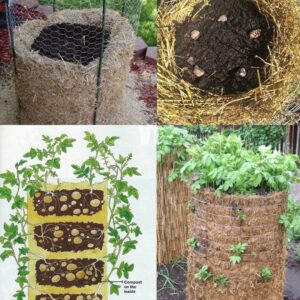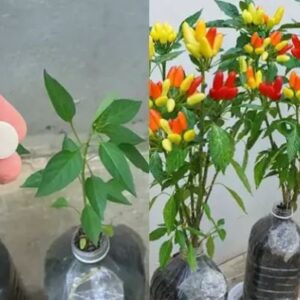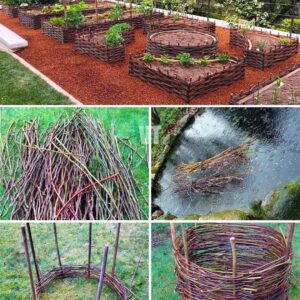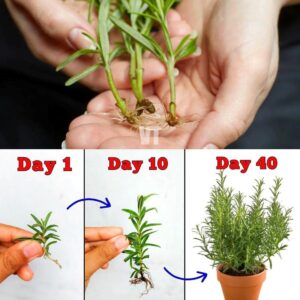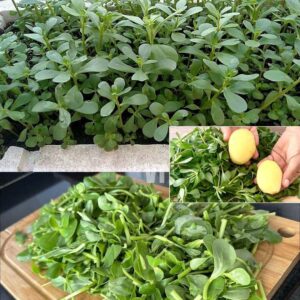
Walnuts are celebrated for their delicious taste and impressive health benefits, but most people don’t realize that the hard, seemingly useless shells encasing the nut also hold surprising value. While it’s common to toss walnut shells aside, they are actually packed with potential uses that go far beyond the trash bin. From practical household applications to beauty treatments and gardening hacks, walnut shells offer a wealth of benefits. Here’s why you should think twice before throwing them away.
1.Natural Exfoliant for Skin Care
One of the most popular uses for walnut shells is in skincare. Ground walnut shells are commonly used in exfoliating scrubs to remove dead skin cells and leave the skin feeling smooth and refreshed. Because the shells are finely ground, they provide a gentle yet effective scrub, perfect for those looking for a natural, eco-friendly alternative to synthetic exfoliants.
How to Use:
DIY Scrub: Mix finely ground walnut shells with honey or your favorite essential oil to create a homemade exfoliating scrub.
Pre-Made Products: Look for skincare products that list walnut shells as a natural exfoliant in the ingredient list.
2.Natural Mulch for Your Garden
Walnut shells can be used as an excellent, eco-friendly mulch for your garden. When spread around the base of plants, they help retain moisture, regulate soil temperature, and prevent weed growth. Unlike some synthetic mulches, walnut shells break down naturally, adding organic matter to the soil over time.
How to Use:
Crush walnut shells into smaller pieces.
Spread them evenly around your plants to retain moisture and suppress weeds.
3.Eco-Friendly Abrasive Cleaner
Thanks to their tough and gritty texture, walnut shells can be used as a natural abrasive cleaner for stubborn dirt and grime. Walnut shell powder is often used in industrial cleaning products, but you can also use it at home for non-toxic, eco-friendly cleaning. It’s gentle enough to be used on delicate surfaces yet effective at scrubbing away tough stains.
How to Use:
Mix finely ground walnut shells with water to create a gentle scrub for cleaning surfaces like countertops or pots and pans.
Use the mixture to remove tough stains from tiles or grout without damaging the surface.
4.Natural Polishing Agent
Walnut shells are used in various industries as a polishing agent, particularly for polishing metals and jewelry. The natural texture of the shells makes them an ideal, non-abrasive material for polishing surfaces without causing scratches. You can take advantage of this property by using walnut shells to polish metal items at home, such as silverware or jewelry.
How to Use:
Finely ground walnut shells can be added to a polishing cloth and used to buff metal surfaces to a shine.
For intricate jewelry, use a brush with ground walnut shells to clean and polish without scratching.
5.Enhances Composting
Walnut shells are a fantastic addition to compost piles. Their high carbon content makes them an excellent “brown” component, helping to balance the nitrogen-rich “green” materials like fruit peels and vegetable scraps. Although walnut shells break down more slowly than other organic matter, they eventually add valuable nutrients to the compost, enriching the soil over time.
How to Use:
Crush the walnut shells into smaller pieces to speed up decomposition.
Add the crushed shells to your compost pile to improve its carbon-to-nitrogen ratio.
6.Natural Pesticide
Crushed walnut shells can act as a natural deterrent to pests like slugs and snails in your garden. When sprinkled around the base of plants, the rough texture of the shells creates a barrier that pests avoid, helping to protect your plants from being eaten.
How to Use:
Crush walnut shells into small pieces and scatter them around the base of plants where pests are a problem.
7.Crafting and Decoration
Walnut shells are a versatile material for crafting and decorative purposes. Their unique shape and durability make them perfect for DIY projects, home decor, or even as natural containers for small items.
Crafting Ideas:
Candles: Use halved walnut shells as mini candle holders by filling them with wax and a wick.
Holiday Ornaments: Paint walnut shells and use them to create festive ornaments or decorations for holidays.
Miniature Planters: Turn walnut shells into small planters for succulents or air plants by adding a bit of soil and placing the plant inside.
8.Air Freshener
Walnut shells can be used to create a natural air freshener. By infusing the shells with essential oils, they can release a pleasant aroma and help deodorize small spaces like closets or drawers.
How to Use:
Clean and dry the walnut shells, then add a few drops of your favorite essential oil.
Place the infused shells in small sachets or bowls to freshen up spaces like closets, bathrooms, or even your car.
9.Fuel for Fire Pits or Wood Stoves
If you have a wood-burning stove or a fire pit, you can use walnut shells as an eco-friendly fuel source. When dried, walnut shells burn efficiently and can be used as kindling to start a fire or to maintain warmth in a wood stove.
How to Use:
Dry the walnut shells completely.
Add them to your fire pit or wood stove as a natural, renewable fuel source.
10.Pet Bedding
Ground or crushed walnut shells can be used as bedding material for pets, such as hamsters or reptiles. The texture provides a comfortable and natural surface, and it is easy to clean. Walnut shell bedding is also dust-free, making it a healthier option for small pets.
How to Use:
Spread ground walnut shells in your pet’s cage or terrarium for a natural and safe bedding option.
Change the bedding regularly to maintain cleanliness.
While most people enjoy eating walnuts, the shells often go to waste, despite their wide range of uses. From improving your garden to providing eco-friendly cleaning solutions, walnut shells offer numerous benefits that make them worth keeping. The next time you crack open some walnuts, save the shells and put them to good use in your home, garden, or even beauty routine. These versatile and natural shells are truly a hidden treasure, waiting to be discovered!
News
आलू टावर कैसे बनाएं: कुशल बागवानी के लिए चरण-दर-चरण मार्गदर्शिका
सीमित जगह में आलू उगाना चुनौतीपूर्ण हो सकता है, लेकिन आलू टावर की मदद से आप एक छोटे से क्षेत्र में अपनी उपज को अधिकतम कर सकते हैं। आलू टावर, खास तौर पर पुआल का इस्तेमाल करने वाले, शहरी बागवानों…
पानी में कटिंग से आम के पेड़ कैसे उगाएं: एक चरण-दर-चरण मार्गदर्शिका
पानी में कटिंग से आम के पेड़ उगाना एक ऐसी विधि है जो सही तरीके से करने पर सफल हो सकती है। यहाँ पानी की विधि का उपयोग करके कटिंग से आम के पेड़ उगाने के बारे में विस्तृत चरण-दर-चरण…
घर पर मिर्च की खेती: शानदार विकास के लिए सुझाव
घर पर मिर्च उगाना आपके बागवानी अनुभव को और भी मजेदार बना सकता है। इस विस्तृत गाइड में, हम कंटेनरों में मिर्च की सफलतापूर्वक खेती करने के लिए आवश्यक चरणों और युक्तियों का पता लगाएंगे, जिसमें पौधों की जीवन शक्ति…
DIY वैटल रेज्ड गार्डन बेड: पर्यावरण-अनुकूल और देहाती पिछवाड़े परियोजना
सदियों से मज़बूत, सुंदर संरचनाएँ बनाने के लिए वेटल वीविंग का इस्तेमाल किया जाता रहा है। लचीली शाखाओं या टहनियों को आपस में जोड़कर, मुख्य रूप से विलो या हेज़ल से, आप एक टिकाऊ और सौंदर्यपूर्ण रूप से मनभावन उठा…
पानी में कटिंग से रोज़मेरी कैसे उगाएं और उन्हें गमलों में कैसे रोपें
रोज़मेरी एक बहुमुखी और सुगंधित जड़ी बूटी है जो कई व्यंजनों में एक रमणीय स्वाद जोड़ती है। घर पर रोज़मेरी उगाना न केवल सुविधाजनक है बल्कि यह भी सुनिश्चित करता है कि आपके पास हमेशा ताज़ा रोज़मेरी हो। रोज़मेरी को…
आपको अपने बगीचे में पर्सलेन क्यों लगाना चाहिए: 8 सम्मोहक कारण
पर्सलेन (वर्डोलैगा) बगीचों में उपद्रव से एक मूल्यवान खजाने में बदल गया है! यह असाधारण पौधा किसानों के बाजारों और प्रतिष्ठित रेस्तरां में अपनी जगह फिर से हासिल कर रहा है, न केवल स्वास्थ्य लाभ प्रदान करता है बल्कि पाक…
End of content
No more pages to load
